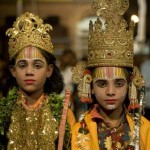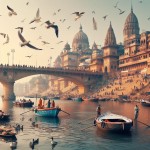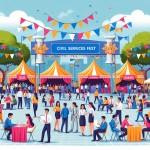Introduction: A Timeless Tradition
The Ramnagar Ramlila, a cultural and religious spectacle steeped in tradition, has captivated audiences from around the world for centuries. Set in the historic town of Ramnagar, situated on the eastern bank of the Ganges near Varanasi, this month-long celebration of the Ramayana is not only one of India's most revered religious events but also a living embodiment of devotion and cultural heritage. As the 2024 edition approaches, the entire town is buzzing with excitement, preparing to welcome devotees, tourists, and theater enthusiasts alike.
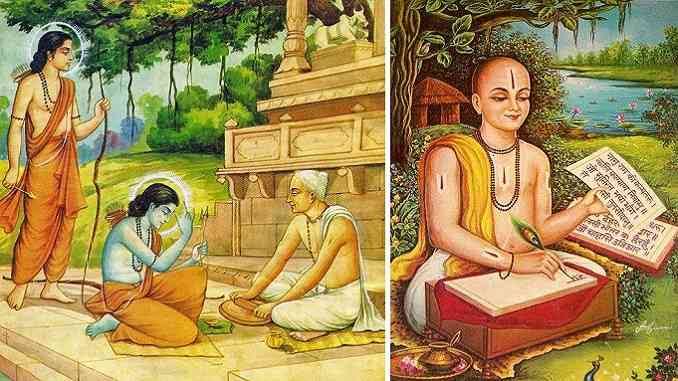
Scheduled to begin on September 17, 2024, this year’s Ramlila promises to be as grand and spiritual as ever. Known for its authentic portrayal of Lord Rama’s life as depicted in the epic Ramcharitmanas by Tulsidas, the Ramnagar Ramlila stands apart from other religious festivals, thanks to its traditional, non-commercialized nature and deep historical significance.
Let us delve deeper into the details of the preparations, history, and cultural significance of this extraordinary event that transforms Ramnagar into a divine realm for 30 days each year.
The Preparation: Ramnagar Immersed in Devotion
As the start date of *September 17* approaches, preparations in Ramnagar have reached their final stage. The entire town is buzzing with activity as organizers, artisans, and locals work tirelessly to ensure every detail is perfect for the grand event.
1. Decorations and Venue Setup:
The preparation for the Ramnagar Ramlila is unlike any other cultural event. Spread across five kilometers, the various performance venues, called ‘manch’, are located at different spots throughout the town. Each venue represents a key location from the *Ramayana, including Ayodhya, Lanka, and Panchavati. Artisans are busy giving the finishing touches to the elaborate sets that represent the ancient world of Lord Rama.
2. Traditional Craftsmanship:
The stages and props are designed without any modern technology, maintaining the event’s centuries-old legacy. No electricity, microphones, or loudspeakers are used throughout the 30-day event, preserving the authenticity of the Ramlila. All scenes are illuminated with natural lighting methods, such as mashals (flaming torches) and oil lamps, lending the performances an ancient, ethereal feel.
3. Costumes and Accessories:
The characters of Lord Rama, Sita, Lakshmana, Ravana, and others are dressed in handcrafted costumes that reflect the period of the Ramayana. Local tailors and craftsmen are busy stitching royal robes, creating crowns, swords, and jewelry that the performers will wear. *Kunwar Anant Narayan Singh, the present Maharaja of Varanasi, continues the tradition of overseeing the preparation of his **royal chariot, **Baghmbari Bagghi*, which is being refurbished for his regal procession. His involvement lends a royal charm to the Ramlila, preserving the royal patronage that has been a part of this event for centuries.
4. Food and Local Businesses:
As the Ramlila is not only a cultural event but also a local festival, it offers an opportunity for local businesses to thrive. Vendors selling traditional delicacies like chai, paan, lassi, and chaat are preparing for an influx of visitors. These food stalls, adorned with colorful decorations, will cater to the thousands who come to watch the performances, turning the entire town into a bustling marketplace.
5. Training the Cast:
The performers of Ramnagar Ramlila, many of whom have been playing their roles for years, are undergoing their final rehearsals. Key actors portraying Lord Rama, Sita, Hanuman, and Ravana are perfecting their performances to ensure every scene is a reflection of devotion and skill. Recitations of the 175 dohas from the Bal Kand of the Ramcharitmanas are also nearing completion. This segment of the epic will be the starting point of the Ramlila, captivating audiences with its lyrical beauty and timeless messages.
The Unique Appeal of Ramnagar Ramlila
The Ramnagar Ramlila is unlike any other portrayal of the Ramayana due to its strict adherence to tradition, and this makes it a truly unique cultural event. The entire performance is free from modern-day technological advancements, offering an authentic experience that connects the audience to an era long gone. Let’s take a closer look at the features that set this Ramlila apart from others across India:
1. No Use of Modern Technology:
Despite the vast crowds that gather for the Ramlila every day, no microphones or loudspeakers are used. Instead, the dialogues and songs are delivered in their natural tones, with actors trained to project their voices across the large open spaces. Similarly, no electric lighting is used; instead, the stages are illuminated by traditional oil lamps and mashals, adding an antique charm to the scenes.
2. 30 Days of Performances:
While most Ramlilas across India last a week or 10 days, the Ramnagar Ramlila extends for a full 30 days. Each day, a different part of the Ramcharitmanas is enacted, allowing the audience to immerse themselves deeply in the story of Lord Rama. The performances begin each evening and continue for several hours, drawing thousands of spectators every night.
3. Live Dialogue Recitation:
One of the most striking features of the Ramnagar Ramlila is its live dialogue recitation. Unlike modern plays, where actors often rely on scripted lines, the performers here memorize entire passages from the Ramcharitmanas and recite them with devotion and precision. This practice not only showcases the performers' dedication but also keeps the essence of Tulsidas's epic intact.
4. Audience Participation:
The Ramnagar Ramlila is an interactive experience, where the audience is not merely a passive observer but an active participant in the event. During certain scenes, such as Lord Rama’s departure to the forest or the final battle between Rama and Ravana, the audience cheers, sings, and offers prayers, creating a spiritual atmosphere that reverberates across the town.
5. Processions and Royal Involvement:
A special feature of the Ramnagar Ramlila is the royal involvement of the Maharaja of Varanasi. Every year, the Maharaja takes part in the Ramlila procession, riding in his Baghmbari Bagghi and observing the performances with the public. The procession is a grand spectacle, with royal guards, musicians, and performers creating a visual treat as they make their way through the town.
Historical Significance: A Legacy of Centuries
The Ramnagar Ramlila has a deep historical legacy that stretches back over 200 years. It was established in the early 19th century by Maharaja Udit Narayan Singh of Varanasi, who sought to create an event that not only honored the divine tale of Lord Rama but also brought the community together in devotion. Over the years, the Ramlila has grown in stature and become a globally recognized cultural event, attracting visitors from far and wide.
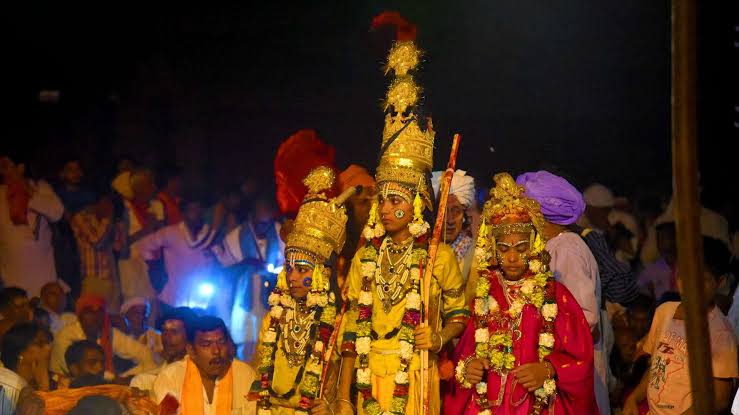
The tradition of royal patronage continues to this day, with the current Maharaja, Kunwar Anant Narayan Singh, playing an integral role in organizing and overseeing the event. His family’s continued involvement ensures that the ancient customs and practices of the Ramnagar Ramlila are preserved, maintaining its authenticity and spiritual essence.
In 2004, the UNESCO recognized the Ramnagar Ramlila as a Masterpiece of the Oral and Intangible Heritage of Humanity, a testament to its cultural and historical significance. This prestigious recognition has further cemented the Ramlila’s place as one of the most important traditional performances in the world.
The Performance: A Divine Journey Through the Ramayana
Each day of the Ramnagar Ramlila is dedicated to a specific part of the Ramayana, with the performances progressing chronologically through Lord Rama’s life. The enactment begins with *Bal Kand*, depicting the early life of Lord Rama, his education, and his marriage to Sita. As the days progress, the audience witnesses key events from the epic, including:
- Rama’s exile to the forest with Lakshmana and Sita.
- The kidnapping of Sita by Ravana.
- The search for Sita by Hanuman and the Vanara army.
- The battle between Rama and Ravana in Lanka.
- Rama’s return to Ayodhya and his coronation as king.
The grand finale, which takes place on the *30th day, is the symbolic burning of Ravana’s effigy, representing the triumph of good over evil. This event draws the largest crowds, as people from all walks of life come to witness the spectacular scene.
Throughout the performances, the actors and the audience alike are immersed in devotion. The air is filled with the recitations of the Ramcharitmanas, devotional songs, and the ringing of temple bells, creating an atmosphere of spiritual fervor that is hard to find elsewhere. The Ramnagar Ramlila is not just a performance; it is an immersive experience of faith, culture, and devotion that draws people closer to the ideals of Lord Rama.
The Role of Music and Chanting: Adding Spiritual Depth
Music and chanting play an essential role in the Ramnagar Ramlila. Unlike modern plays where elaborate background scores and sound effects dominate, the Ramlila relies on traditional bhajans (devotional songs) and kirtans to enhance the performances. The songs, often composed in praise of Lord Rama, Sita, Hanuman, and other divine characters, are performed live by local musicians.
These bhajans are usually based on verses from the Ramcharitmanas, which narrate the life and virtues of Lord Rama. The dholak, tabla, and harmonium accompany these recitals, providing a melodious backdrop that adds emotional depth to the unfolding drama. The chanting of ‘Jai Shri Ram’ by the audience is a common occurrence, particularly during the more dramatic scenes, reflecting the collective devotional energy of the gathering.
For many attendees, the musical and spiritual atmosphere of the Ramnagar Ramlila serves as a form of meditation. The repetitive chanting of sacred verses and the deep emotional resonance of the Ramcharitmanas offer a profound sense of peace and spiritual fulfillment.
Impact on the Local Economy: A Cultural Festival for All
The Ramnagar Ramlila is not just a religious event; it also has a significant impact on the local economy. During the month-long festivities, the town of Ramnagar transforms into a bustling hub of activity, attracting tourists and devotees from across India and abroad. This influx of visitors provides a major boost to local businesses, especially small vendors who set up temporary stalls to cater to the crowds.
1. Food Stalls and Vendors:
The lanes of Ramnagar are lined with food stalls offering traditional delicacies such as kachori,samosa, lassi, and various types of sweets. These stalls are a major attraction for visitors, who enjoy local flavors while watching the performances. The food vendors often experience a surge in sales during the Ramlila season, making it one of the most profitable times of the year for them.
2. Handicrafts and Souvenirs:
In addition to food, local artisans and craftsmen sell handicrafts, souvenirs, and religious items related to Lord Rama and the Ramayana. These include miniature idols of Lord Rama, paintings, and handcrafted jewelry. The Ramlila offers a platform for these small businesses to thrive, as visitors are eager to take home mementos of their spiritual experience.
3. Accommodation and Transport:
The event also brings economic benefits to the hospitality sector. Local hotels, guesthouses, and even homestays see a rise in bookings as visitors flock to Ramnagar for the entire month. Auto-rickshaw drivers, boatmen, and other transport services also benefit from the increased footfall, providing services to visitors who want to explore the town and its surroundings.
4. Cultural Tourism:
As an event that attracts international attention, the Ramnagar Ramlila has also contributed to the growth of cultural tourism in the region. Tourists from different parts of the world, particularly those interested in Indian culture and religious practices, make it a point to visit Ramnagar during the Ramlila. This international exposure has further boosted the town's economy, providing employment opportunities for locals in the tourism and hospitality industries.
Conclusion: The Spiritual and Cultural Legacy of Ramnagar Ramlila
The Ramnagar Ramlila is more than just a religious festival—it is a celebration of India’s cultural and spiritual heritage. Rooted in centuries-old traditions, the event serves as a bridge between the past and the present, allowing modern-day audiences to experience the ancient epic of the Ramayana in its most authentic form.
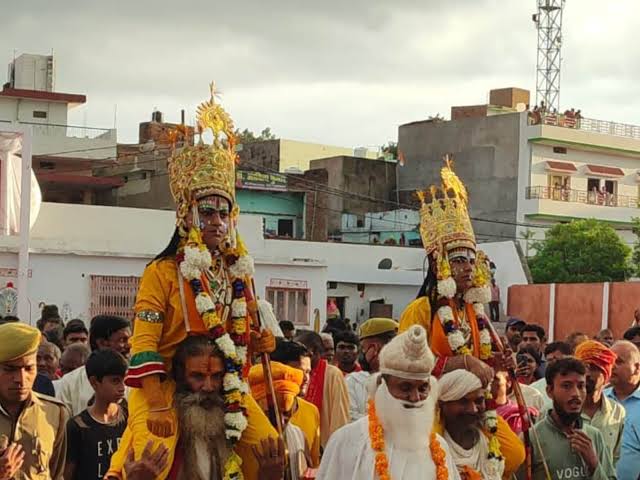
The preparations for this year’s Ramlila, set to begin on September 17, 2024, are already creating an atmosphere of excitement and devotion in Ramnagar. From the meticulously crafted costumes to the natural lighting of the stages, every detail is carefully planned to offer an immersive experience that is both spiritual and culturally enriching.
For the people of Ramnagar, the Ramlila is not just an annual event—it is a part of their identity. It unites the community, drawing everyone together in a shared act of devotion, creativity, and hospitality. For the performers, it is a way to honor their heritage and connect with the divine. And for the audience, it is an opportunity to witness a sacred tradition that transcends time, leaving a lasting impression on their hearts and minds.
As the opening night approaches, the town of Ramnagar is ready to be transformed once again into a stage for one of the world’s most extraordinary cultural performances. The Ramnagar Ramlila continues to shine as a beacon of devotion, reminding us all of the eternal values of love, righteousness, and faith that are embodied in the story of Lord Rama.
For anyone seeking a deeper connection with India’s spiritual roots or a glimpse into the country’s rich cultural tapestry, there is no better place to be than Ramnagar during the Ramlila. It is a festival that transcends religion, language, and geography, uniting all who attend in a shared celebration of the triumph of good over evil.







